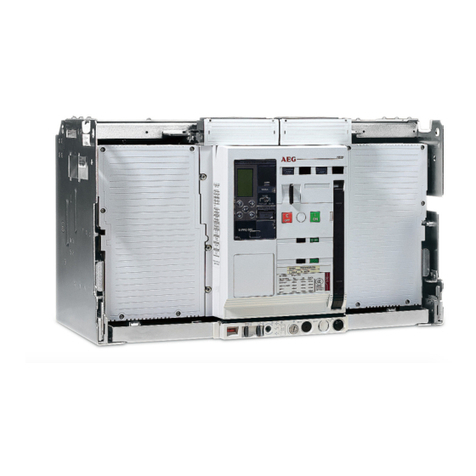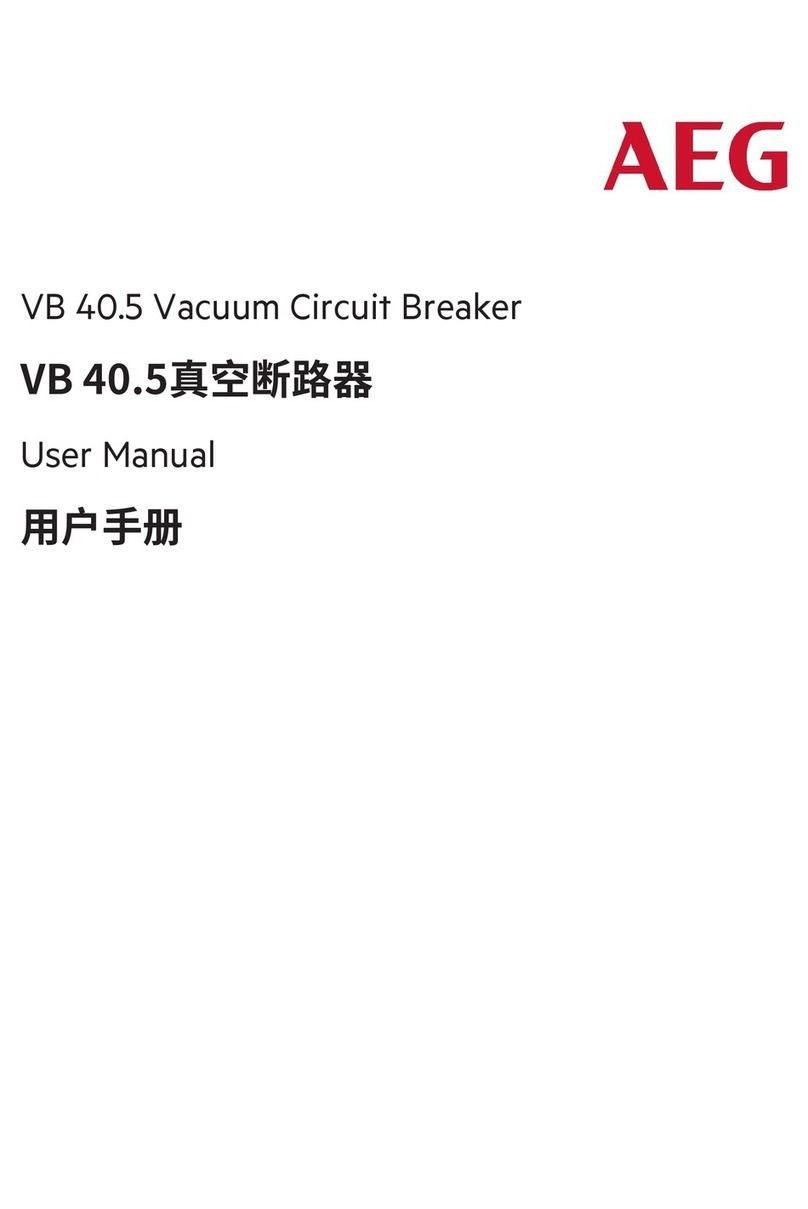
The maintenance arid reconditioning works recommended include only
those parts that
ar'e
<:;Ilhjert
to wear and tear and aging
The crucial variables influencing the condition of the breaker are:
number of short circuit interruptions
number of switcring operations
time in service
TheAEG maintenance program takes these variables into consideration
by .offering suitable inspection, maintenance and reconditioning
intervals.
Maintenance and reconditioning should be carried out according to
the following guidelines.
When equipment is operated in extreme ambient conditions, it is
advisable to shorten the inspection and maintenance intervals.
Such-conditions are the following:
permanent high ambient temperature
abrasive dust in the atmosphere
high dust content atmosphere
permanent high humidity
corrosive gas or vapors in the atmosphere
Due to the use of highly stable grease resp. dry self-lubricating
friction component~; the spring operating mechanisms do not require
any maintenance unlder normal conditions.
Maintenance and reconditioning should preferably be carried out by-
AEG specialists.
Service personnel (an be thoroughly trained on the job in .courses
offered by AEG.






























